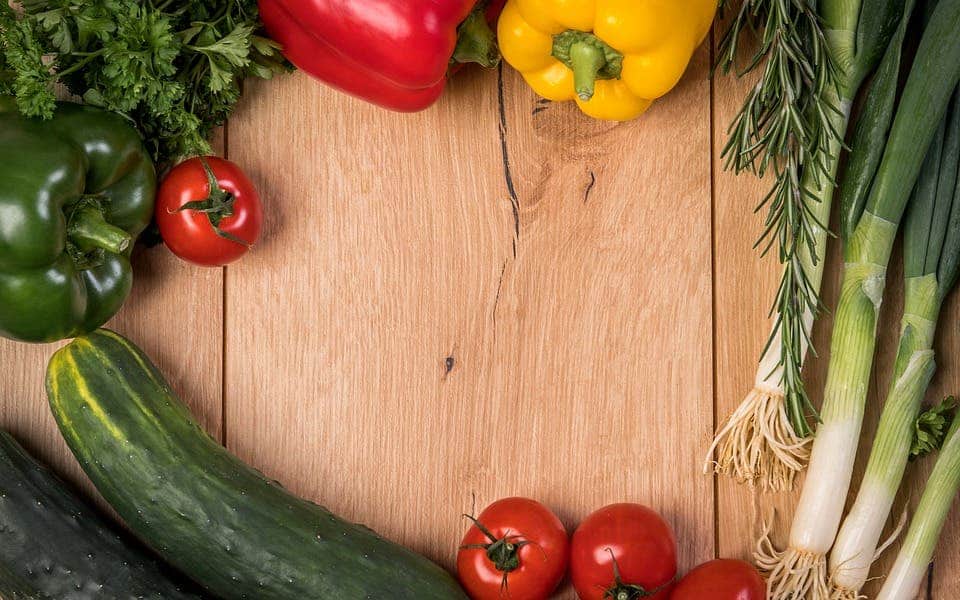It should come as no surprise to anyone that what we consume has an impact on the environment. But you don’t have to turn vegan or eat only gluten-free products to help the environment. According to a recent study, if people followed the dietary recommendations put forward by their local governments, the strain on the Earth would be considerably lessened.

If every citizen living in any of the 28 high-income countries included in the study, such as the U.S., Japan, or Germany, followed local dietary recommendations, there would be a 13 to 25 percent reduction in greenhouse gas emissions related to food production. What’s more, the amount of land required to grow food would decrease by as much as 17 percent.
To grow food for more than seven billion people, we release 20 to 30 percent of the world’s total greenhouse gas emissions. A staggering one-third of all ice-free land on Earth is currently being used to grow food.
Win-Win
The Dutch team at Leiden University, led by Paul Behrens, employed the Exiobase database, which compiles information like greenhouse gas emissions, land demand, and fertilizer pollution caused by the production of each type of food across the world. This extensive database also takes into account the cost of the machinery involved in food production, as well as the cost of shipping food all the way from the farmers to a supermarket near you. It was then only a matter of calculating the impact people have on the environment with what they’re currently eating versus the impact they would have, were they to follow the recommended diet.
The analysis takes into account that some foods, depending on where they’re grown, can require more or fewer resources. English tomatoes require more energy than in Spain where it is warmer, for instance.
“It’s superb that we have this information,” Behrens said. “You can trace the impact of any consumption across the world.”

[panel style=”panel-success” title=”Summary 2015-2020 Dietary Guidelines for Americans” footer=”2015-2020 Dietary Guidelines, health.gov.”]
- Follow a healthy eating pattern throughout your life. All food and beverage choices matter. Choose a healthy eating pattern at an appropriate calorie level to help achieve and maintain a healthy body weight, support nutrient adequacy, and reduce the risk of chronic disease.
- Focus on variety, nutrient density, and amount. To meet nutrient needs within calorie limits, choose a variety of nutrient-dense foods across and within all food groups in recommended amounts.
- Limit calories from added sugars and saturated fats and reduce sodium (salt) intake. Cut back on foods and beverages higher in these components to amounts that fit within healthy eating patterns.
- Consider cultural and personal preferences when shifting to healthier food and beverages to make the transition easier to accomplish and maintain.
- Support other people’s healthy eating patterns. Everyone has a role in helping to create and support healthy eating patterns in multiple settings nationwide, from home to school to work to whole communities.
[/panel]
Behrens and colleagues computed the energy and resources required for the diets of people living in 39 countries, as well as for the dietary recommendations put out by governments in those countries.
When the diets were calculated, the researchers were careful to keep the calorie counts of both diets the same, only altering the percentage of different food groups that people actually eat. Ultimately, Behrens found that people living in the world’s 28 wealthiest countries could significantly lower their environmental impact if they chose to follow their government’s dietary recommendations.
“In general, meat is worse than other types of food because every time something eats something else, you get a loss of energy,” Behrens said. “Eating any animal is going to have more of an impact compared to other food groups.”

[panel style=”panel-info” title=”Key Dietary Recommendations from US Gov.” footer=”2015-2020 Dietary Guidelines, health.gov.”]
Maintain a healthy eating pattern that accounts for all foods and beverages within an appropriate calorie level.
A healthy eating pattern includes:
- A variety of vegetables from all of the subgroups — dark green, red, and orange, legumes (beans and peas), starchy, and other
- Fruits, especially whole fruits
- Grains, at least half of which are whole grains
- Fat-free or low-fat dairy, including milk, yogurt, cheese, and/or fortified soy beverages
- A variety of protein foods, including seafood, lean meats and poultry, eggs, legumes (beans and peas), and nuts, seeds, and soy products
- Oils
A healthy eating pattern limits:
- Saturated fats and trans fats, added sugars, and sodium
Key Recommendations that are quantitative are provided for several components of the diet that should be limited. These components are of particular public health concern in the United States, and the specified limits can help individuals achieve healthy eating patterns within calorie limits:
- Consume less than 10 percent of calories per day from added sugars
- Consume less than 10 percent of calories per day from saturated fats
- Consume less than 2,300 milligrams (mg) per day of sodium
- If alcohol is consumed, it should be consumed in moderation — up to one drink per day for women and up to two drinks per day for men — and only by adults of legal drinking age.
In tandem with the recommendations above, Americans of all ages — children, adolescents, adults, and older adults — should meet the Physical Activity Guidelines for Americans to help promote health and reduce the risk of chronic disease. Americans should aim to achieve and maintain a healthy body weight. The relationship between diet and physical activity contributes to calorie balance and body weight management. As such, the Dietary Guidelines includes a Key Recommendation to
- Meet the Physical Activity Guidelines for Americans.[/panel]
When you think about it, eating healthily is a win-win situation because not don’t only keep yourself healthy — but also the environment. However, rarely, if ever, is this point raised during awareness campaigns.
“Dietary recommendations can be a great way to talk about human health and the health of the environment,” Behrens said. “The main point is you can win both ways.”
If you’re interested, use this link for the most recent edition of the Dietary Guidelines for Americans.
Scientific reference: Paul Behrens et al. Evaluating the environmental impacts of dietary recommendations, Proceedings of the National Academy of Sciences (2017). DOI: 10.1073/pnas.1711889114






